Unloading lumber and a number of other topics!

I saw this photo on Pinterest and it caught my attention for a number of reasons. The Milwaukee Road built a little over 3,000 of horizontal ribbed boxcars between 1939 and 1940. These cars were unique in that the horizontal panels ran continuous to the door opening with ribs roughly 18” apart. This horizontal pattern was in lieu of the typical flat panels that ran between each of the vertical supports and were seamed at the support. MILW boxcar #9505, an example of the horizontal ribbed cars, is carrying a load of lumber/plywood (I’m assuming that’s plywood). The doors have been removed along with about half of one side of the sheathing and the vertical supports. Stake pockets have been added on the sill beam with the pockets holding heavy wood side supports that hook inside at the edge under the roof and punch through the roof to stick above a few inches. I’m guessing these modifications were done so that the vertical wood side-bracing in the stake pockets could be removed for easy unloading of the plywood.
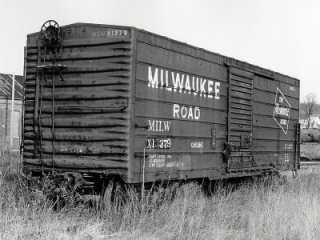
Model maker MDC did a cast metal model of these horizontal ribbed cars in the ‘50s, and there have been several plastic models of these boxcars including an Accurail kit. So seeing a nice model of these boxcars isn’t an issue, but I’ve struggled to find pics of the prototype. Here is one of the few pics I’ve found of these unique boxcars.
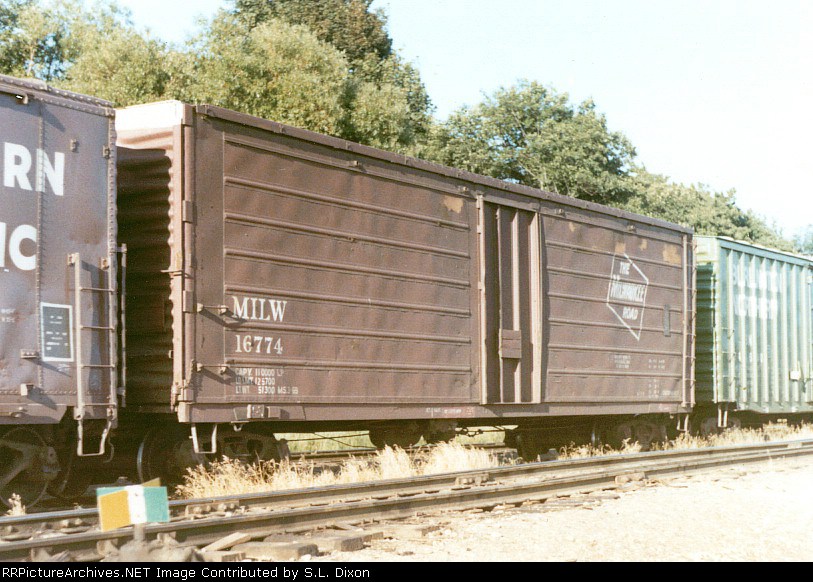
But apparently finding modified versions of the car are just a bit easier! – Here, MILW #16774, horizontal ribbed boxcar has been converted to a wood-chip car by filling in the door opening with vertical panels and then removing the roof. This pic was taken in 1972.
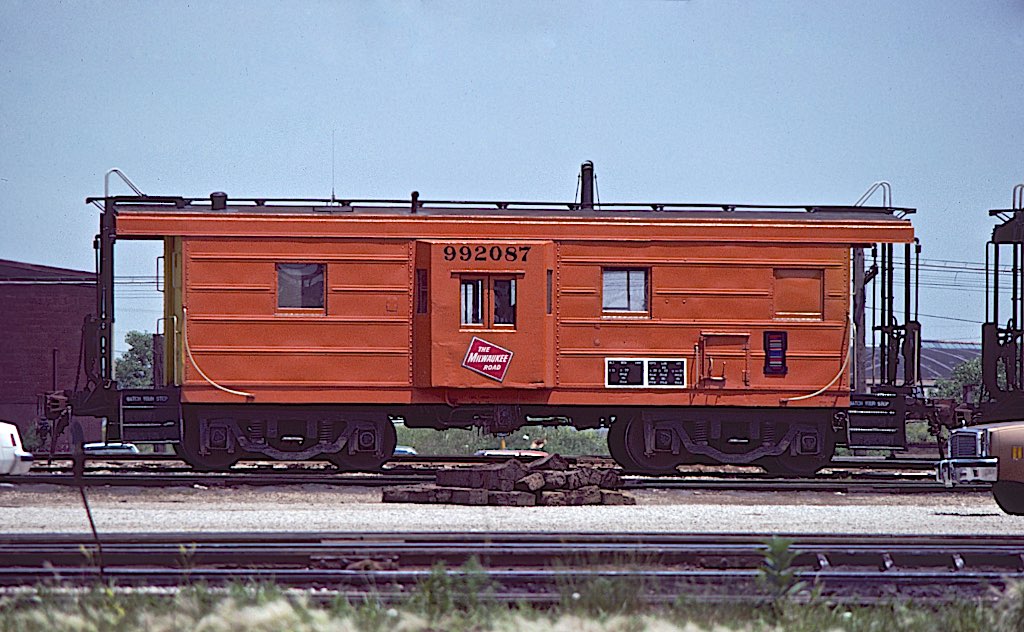
Now Milwaukee Road didn’t just use this pattern of horizontal ribbed panels on boxcars. Here’s a caboose that’s sheathed with the same panels. (I didn’t find much on #992087, but didn’t spend a lot of time searching either.) I believe Milwaukee also used the horizontal ribbed sheathing on a run of express cars, but I couldn’t find a prototype pic.
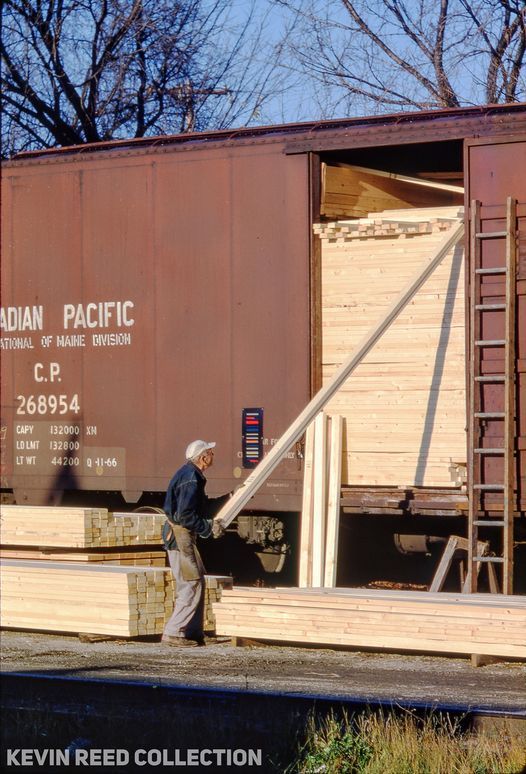
Getting back to the plywood load – It reminded me of stories that the late Tom Overton (former club member) told of unloading lumber from boxcars for a local lumber yard. Tom talked about how they would drive a flatbed a few hundred yards to a near siding to pick up the load. Lumber was stacked almost to the ceiling of the boxcar, often times in 50’ auto or furniture boxcar. They would slide enough pieces out to create a gap at the top of the car large enough for a man to wiggle in. Then he would push the individual boards out for the second man to grab and unload unto a flatbed truck. The unloading process took several trips in the flatbed, usually over the two day period the boxcar sat on the siding. CP #268954 is being unloaded (or possibly loaded) just as Tom described. You can’t see the guy up in the top of the boxcar, but you can see the board he’s holding diagonal coming off the stack inside the boxcar to the left of the door. The guy on the ground has leaned three more boards up in the door opening.
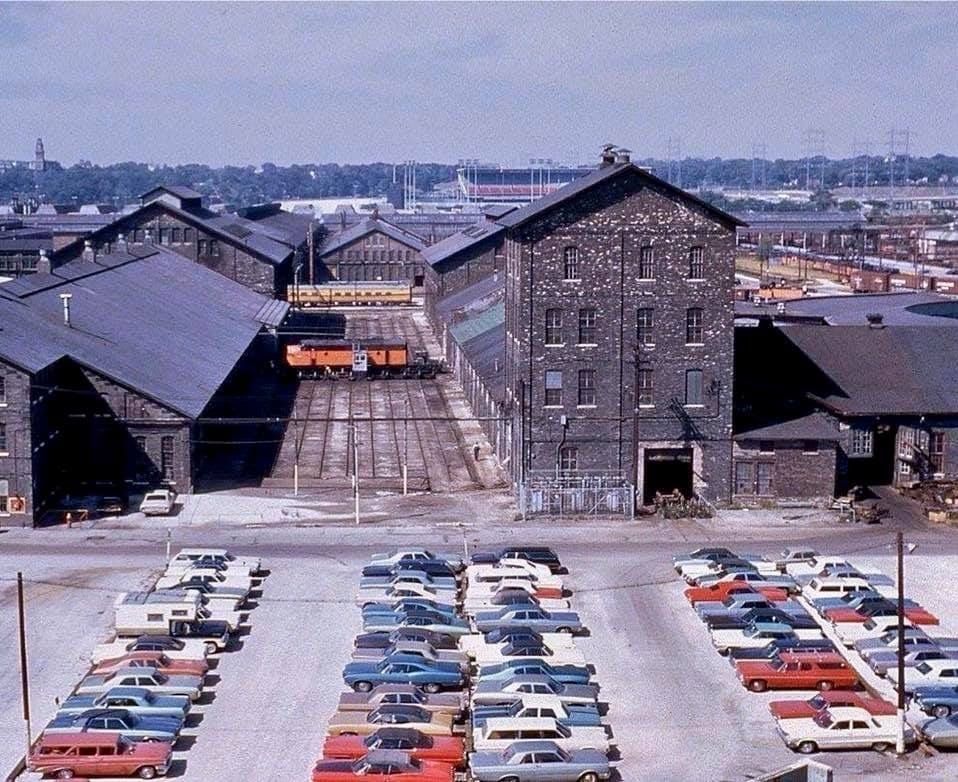
Now, in searching for those Milwaukee boxcars, I came across this pic of the Milwaukee Road shops, 1979 in Milwaukee, WI. That’s a nice view of the transfer table. This view catches several of the shop buildings.
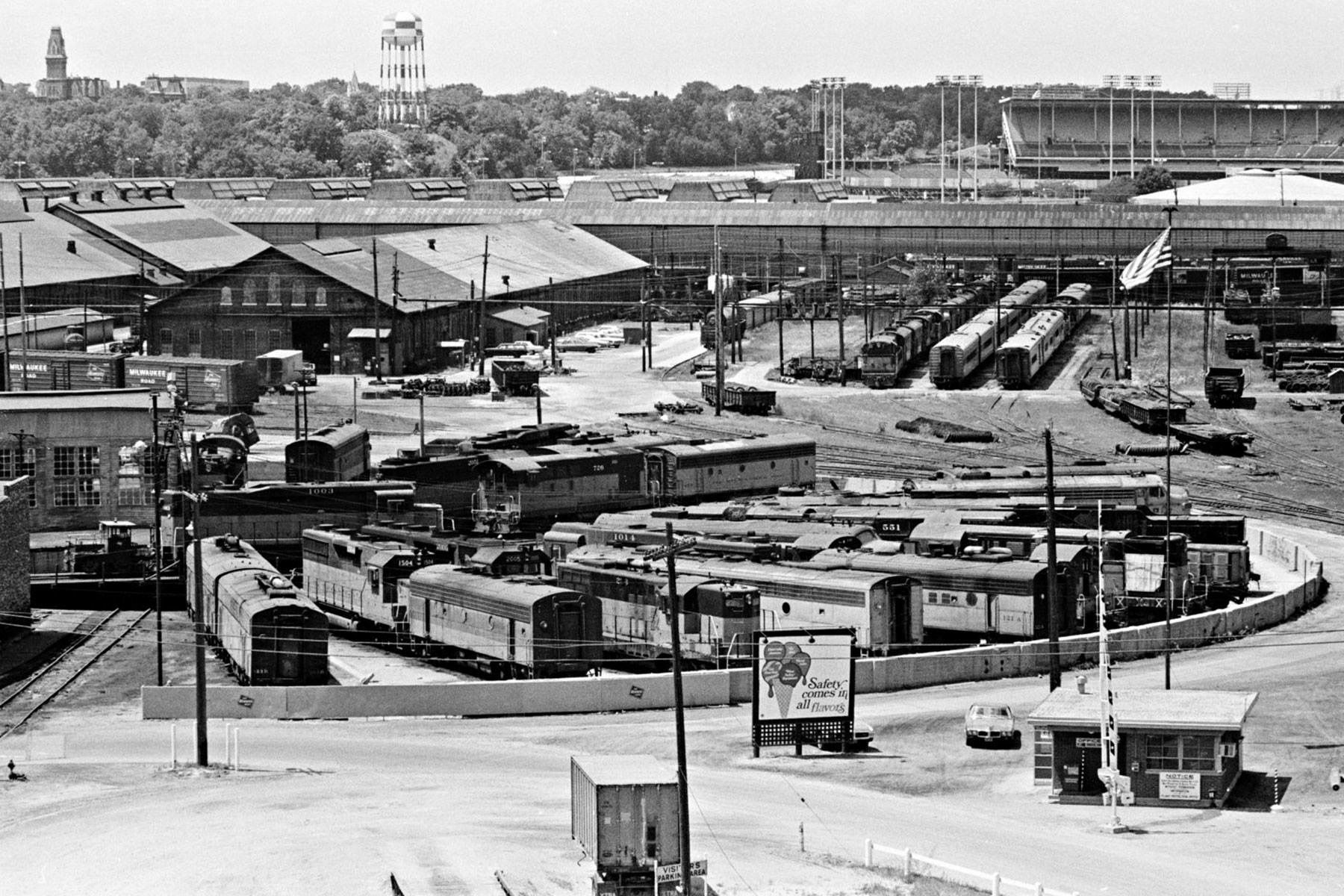
This was a huge facility right next door to the baseball stadium (in the background of this and the previous pic). The turntable you see in this pic is just to the right of the roundhouse on the right edge of the pic above.
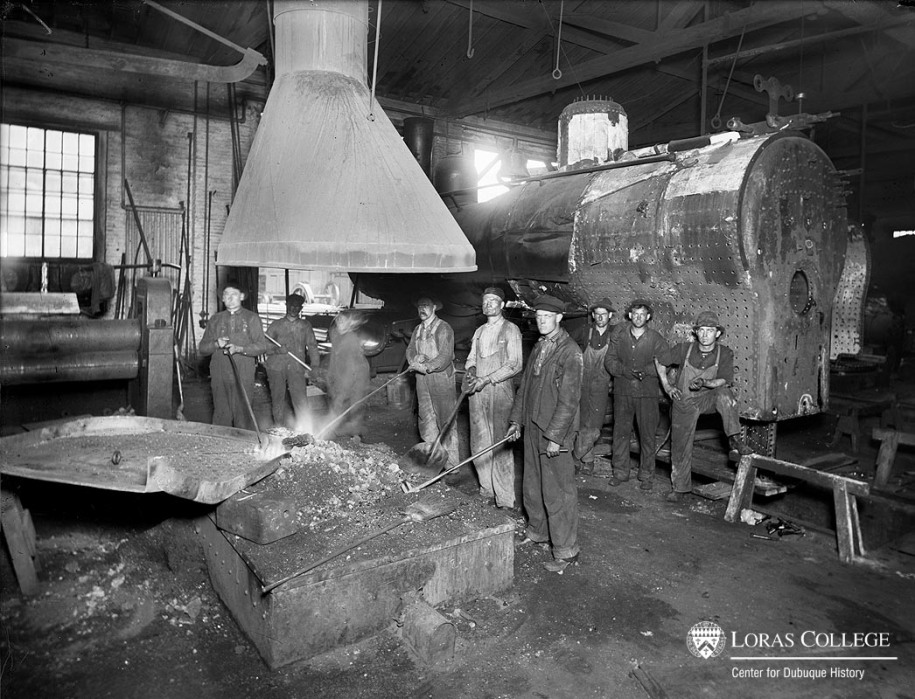
This pic goes back to 1912 inside the Milwaukee shops where the crew is doing some boiler plate work.
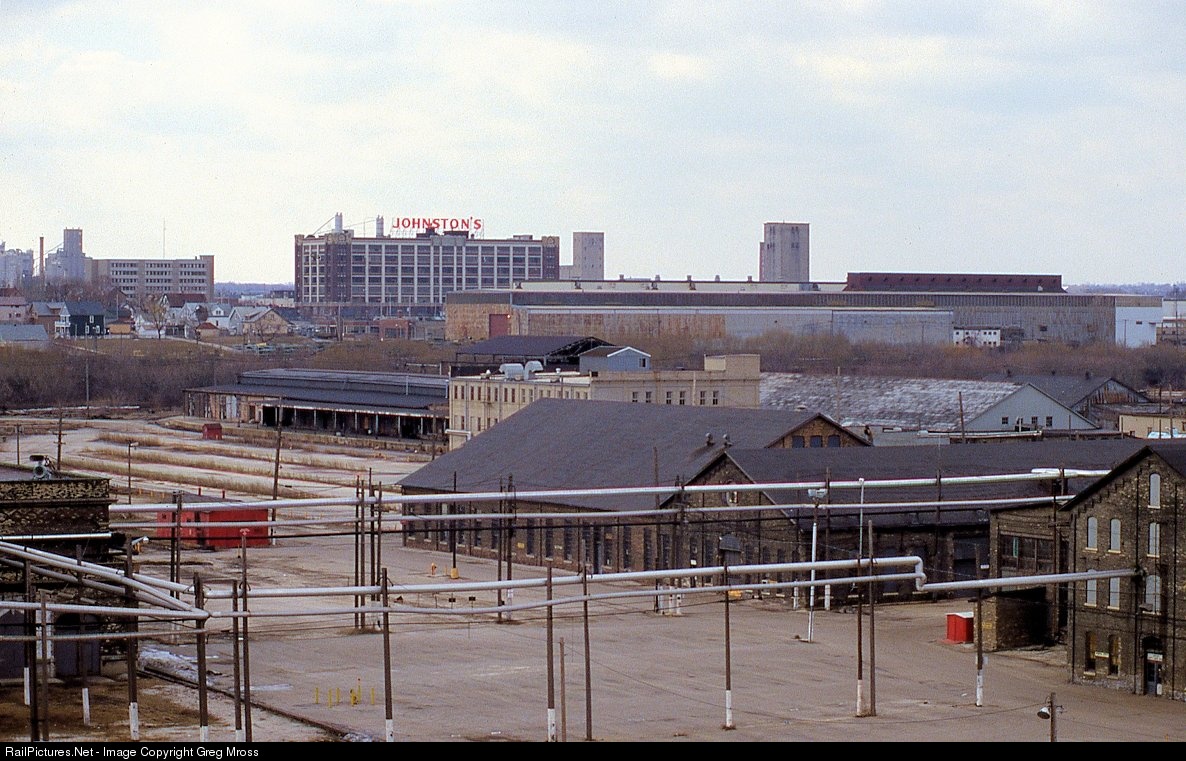
Then moving up to 1985 when many of the shop structures are going unused. The edge of the power plant building can be just seen on the left of the photo with it’s steam pipes heading off to the other structures. The Johnston’s plant in the background was a cookie plant – the warm cookie smell made you hungry just driving by it (at least that’s what my source says!). Both the shops and the Johnston’s plant are gone now.
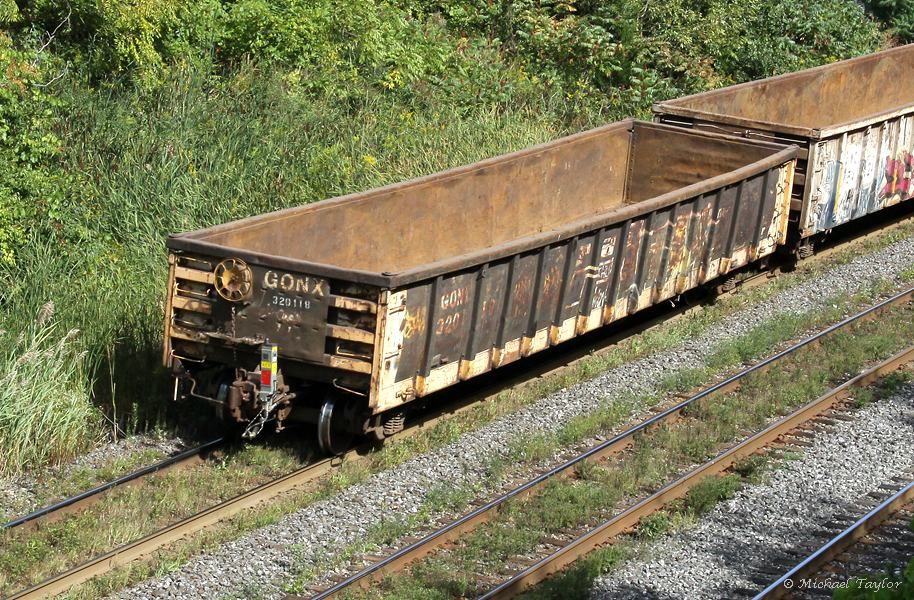
…How I drifted from the MILW shops to this beat-up gondola…I guess I like the old dents and rust with a little graffiti. GONX is the reporting mark used by Railgon Company – I haven’t seen many pics of Railgon cars. GONX 320118 is a 57′ gondola (AAR Type G516) at the rear of train #148 passing Bayview on Saturday, September 11th, 2010.
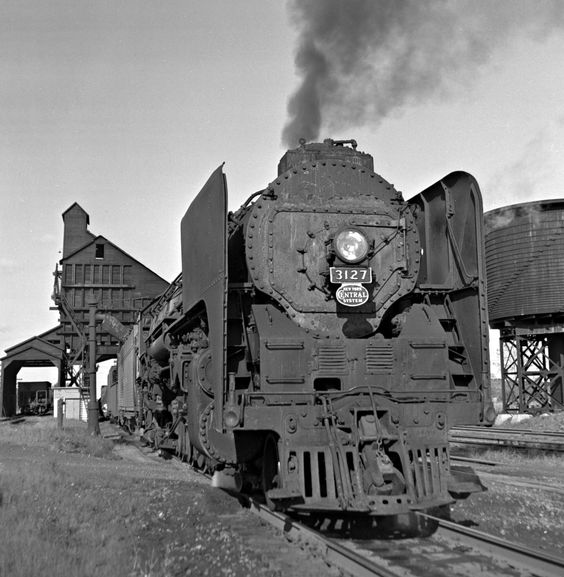
Getting back to railroad shops – Galion, Ohio, train #1955 southbound New York Central Railroad 4-8-2 Mohawk steam locomotive #3127 gets water at Galion on September 25, 1955. Photograph by J. Parker Lamb, © 2015, Center for Railroad Photography and Art.
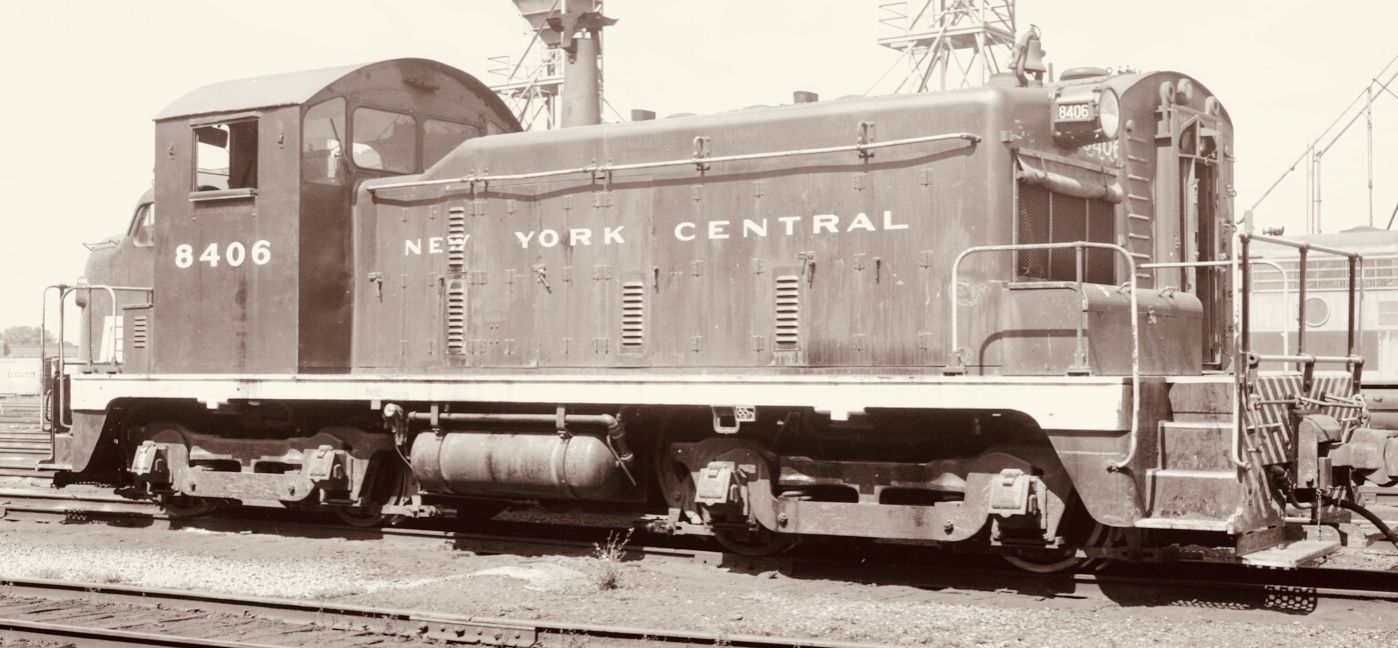
NYC #8406 (originally #580), an SW1 built in 1943. Pic taken around the mid ‘60s at a NYC engine facility. (Glimpse of an F unit behind.)
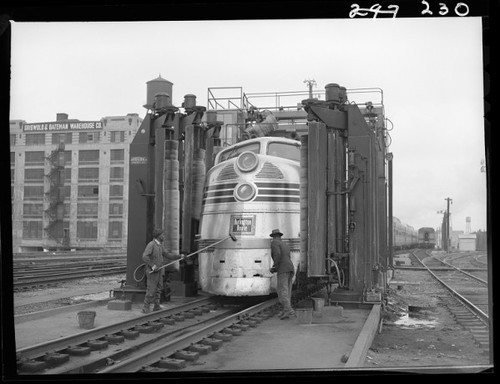
Here’s a CB&Q FTA (I think) getting a wash before a run (probably passenger). Check out the diesel service/wash equipment. Those tall cylinders on the side of the loco appear to be spinning brushes like in a car wash.
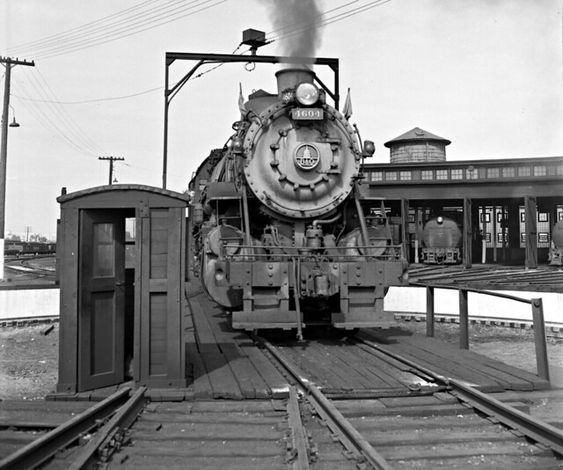
Baltimore and Ohio Railroad steam locomotive #4604 at the shop in Dayton, Ohio, in August 1955. Photograph by J. Parker Lamb, © 2015, Center for Railroad Photography and Art.
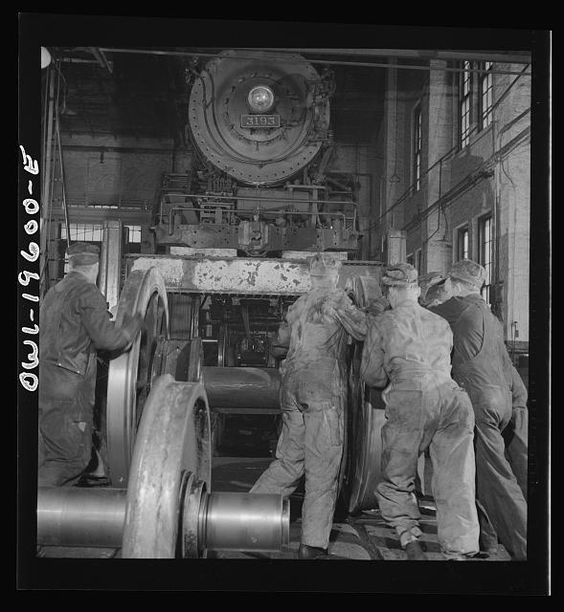
…Fort Madison, Iowa – wheeling an engine in the Shopton locomotive shops of the Atchison, Topeka, and Santa Fe Railroad.
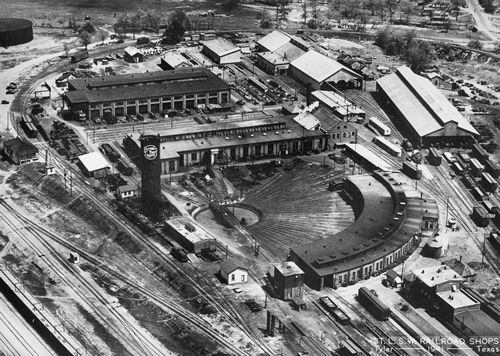
This is the St. Louis Southwestern Railroad shops, roundhouse, and turntable, 1941, in Smith County Texas (probably Tyler). Photo Courtesy Smith County Historical Society.
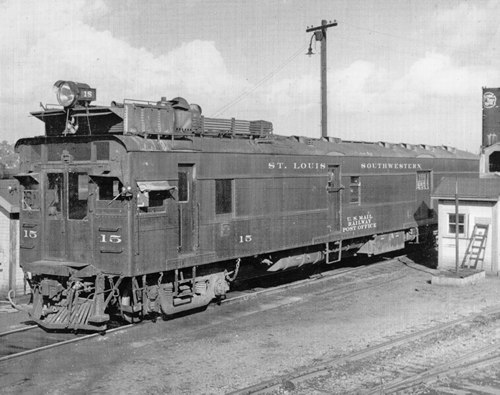
…again – drifting from the shops, but staying with the SSW “Cotton Belt”…This single interurban car shuttled between Lufkin and Tyler, making two round trips daily. The front third contained the power unit, the middle contained a post office, and the back was a passenger area. Photo Courtesy Smith County Historical Society
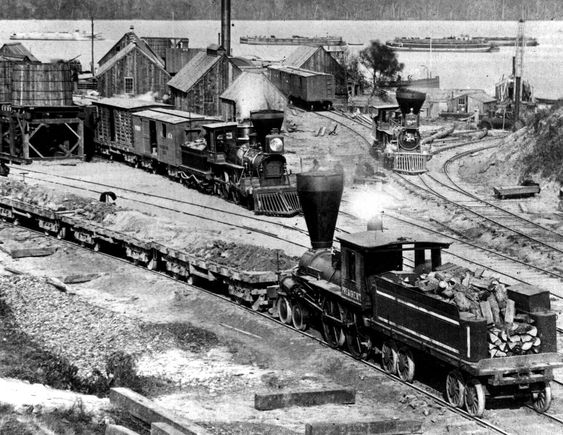
Returning to shops, but dropping back a century and a half, this pic shows part of the town and railroad facilities at City Point, VA, around 1861 to 1865. This is a photo you have to enlarge to fully appreciate: Check out the barges on the James River. I’m not sure, but I think the railroad during this era was named the South Side RR. Originally, it was the City Point RR (CPRR) and was merged into the South Side in 1854. At some point, it became part of the N&P (Norfolk and Petersburg RR), and eventually became the oldest part of the N&W. The locomotive in the foreground appears to be pushing a train of flats loaded with earth or something similar. Check out the spoked wheels on the tender trucks! The tender trucks are not typical as we know them – no side frame! They match the style of the pilot truck on the 4-4-0
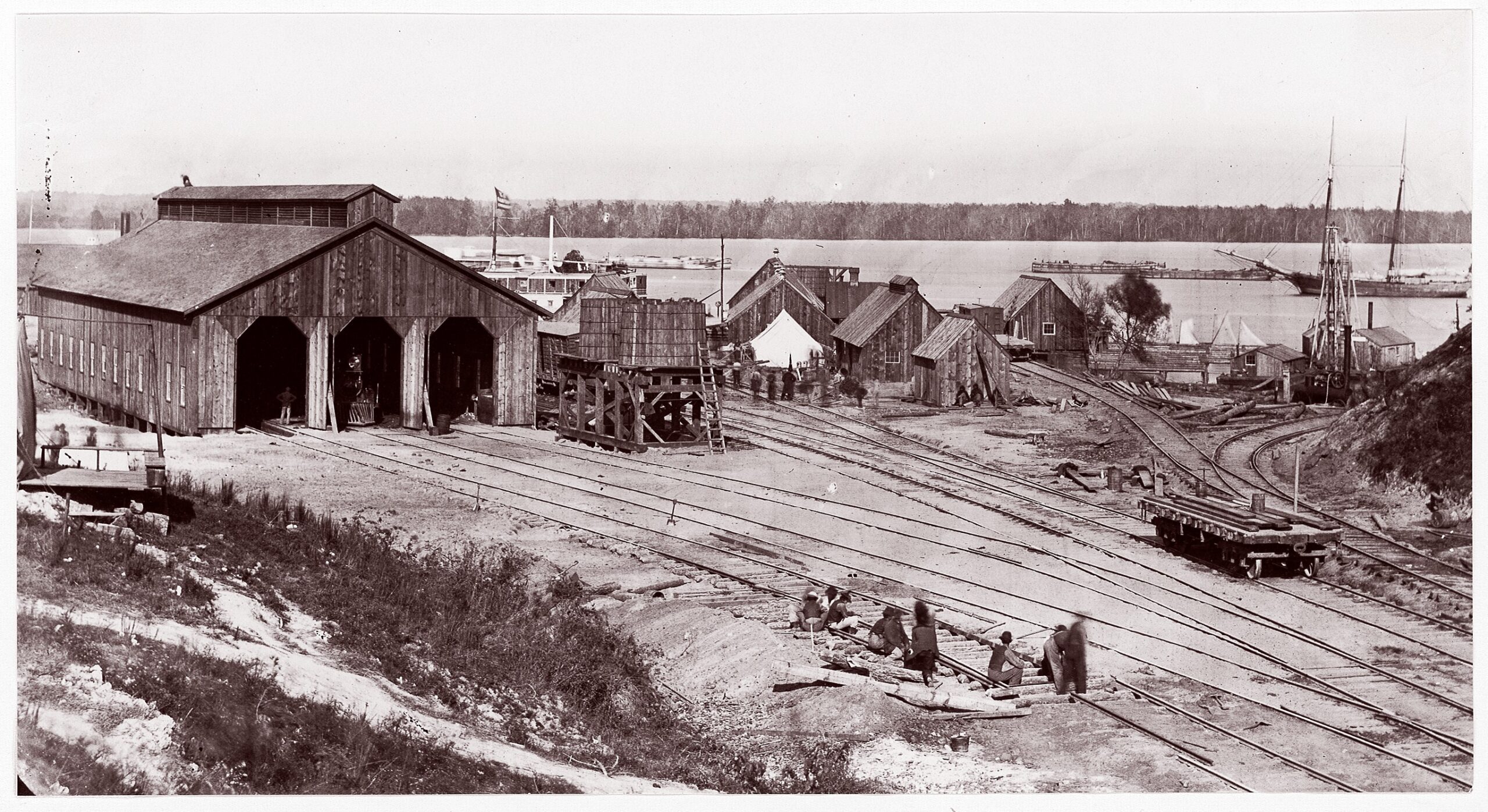
This pic catches the engine house to the left of the twin water tanks. That’s a fantastic old wood engine house! You can also see a large ocean bound sailboat on the river near barges – City Point was located at the tide point of the James River. The track crew is either repairing or shifting the first engine house lead.
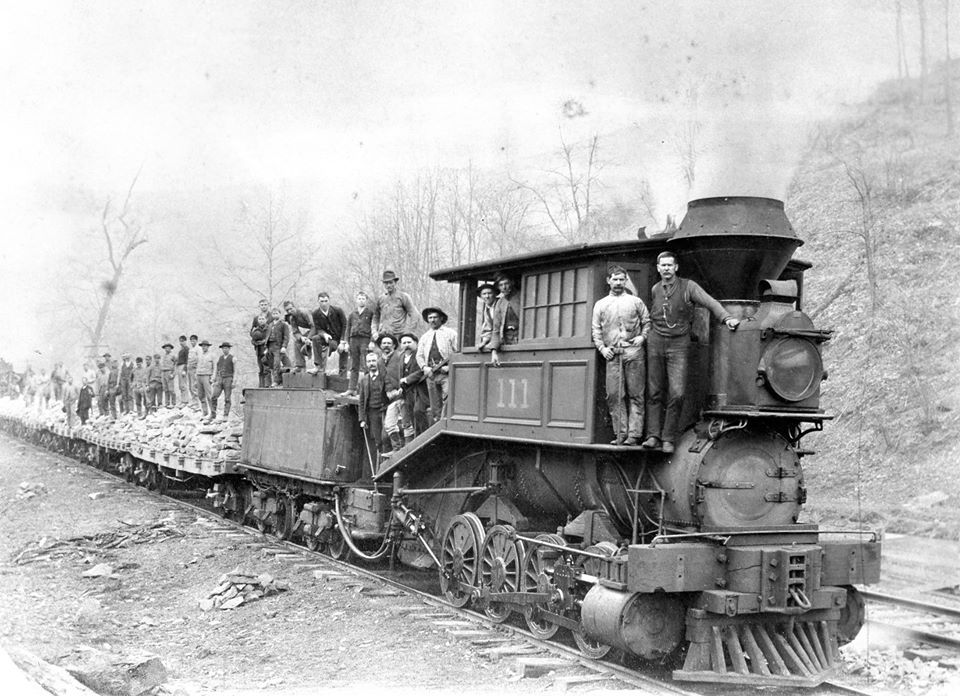
Switching topics again: The early railroad era brought me to the Baltimore & Ohio Winans Camel 0-8-0 #111 – unknown location, date, & occasion. Base on the B&O roster, #111 was probably built around 1852-53. Ross Winan is a topic for another day, but he created the line of camel locomotives which the B&O bought in numbers in the middle of the 19th century.
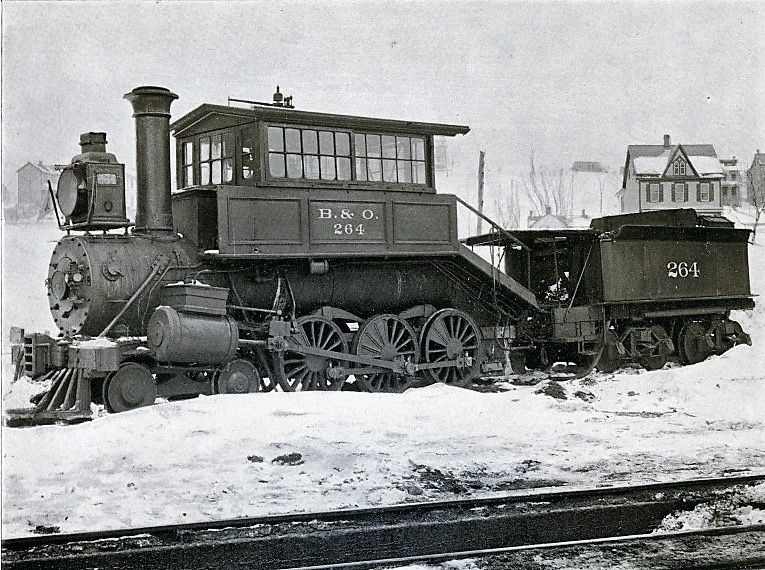
B&O #264, is Class A, 4-6-0, Winans style Camel steam locomotive, probably built in the early 1870s.
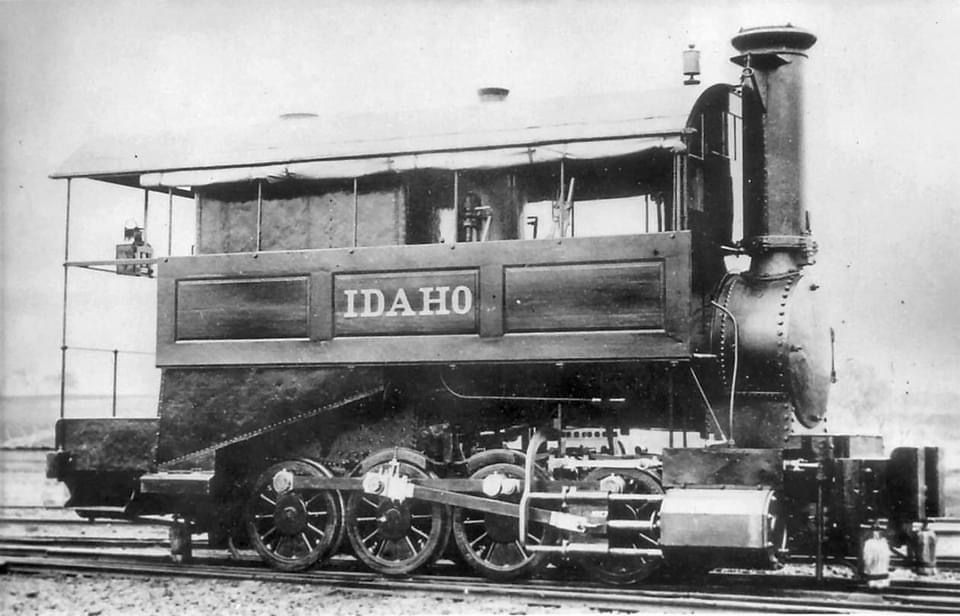
In searching for a few representative Winan camels, I found the “Idaho”. It’s styled like the Winans, but I can’t find anything on it – blank on who the owning RR is! Check out the hexagonal shaped cylinder!
So with all the 19th century railroad history I drifted into, this relatively modern pic of D&H #1611, a Class H 0-8-8-0, led me to an interesting fact about the Delaware & Hudson. While the B&O was the first railroad company in the US, the D&H existed as a canal company (Delaware & Hudson Canal Co.) since 1823 moving coal in canal barges from coal rich Pennsylvania. With the 1830s and 1840s development of the railroads, both the demand for coal was increasing, and the rails proved to be an alternate way of transporting the coal. The rails also provided a way for the D&H to expand their distribution beyond the waterway they controlled. So the D&H moved into rail transportation along with the canal. “Canal” remained in the company name until 1898 when it sold off its waterway and dropped “Canal” from the corporate title.
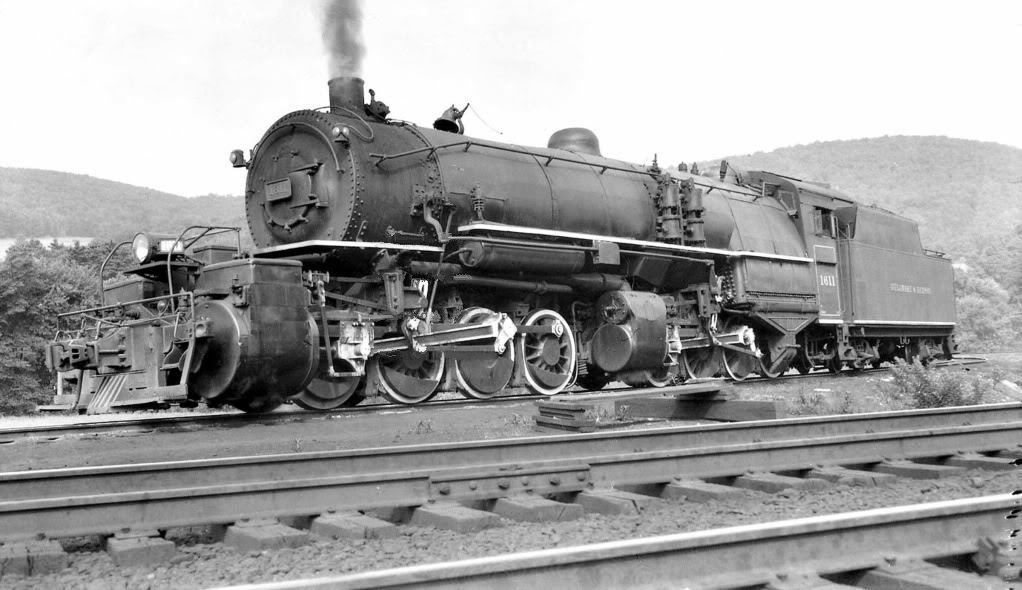
Here’s an earlier pic of D&H #1611 at work on the rails. The D&H and all remaining properties were sold to the CPR (Canadian Pacific Railway) in December 2000 ending a 177 year legacy in transportation – the oldest continuously owned transportation company in North America. In this pic, check out the ballast and ties in the foreground – ballast is below the rail with the ties sticking up well above the ballast level.
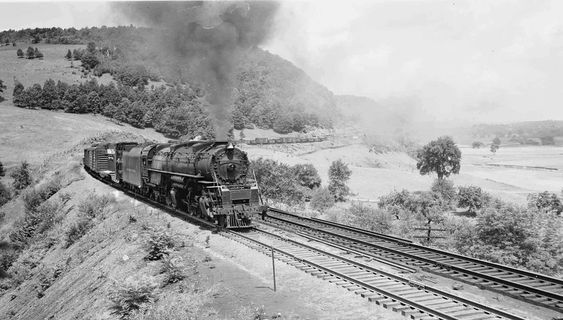
One more look at a Delaware & Hudson 4-6-6-4 Challenger as it pulls a freight train through the hills.
So…a little bouncing around, but a fun group of pics to tie together!
Thx,
Kevin
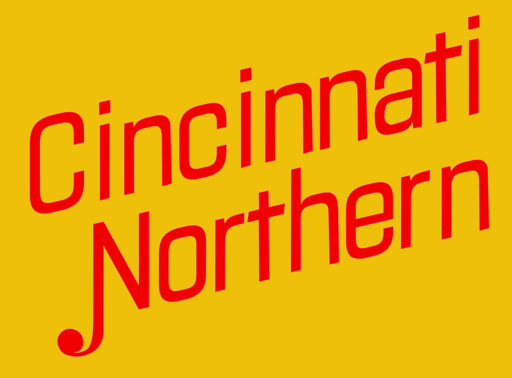
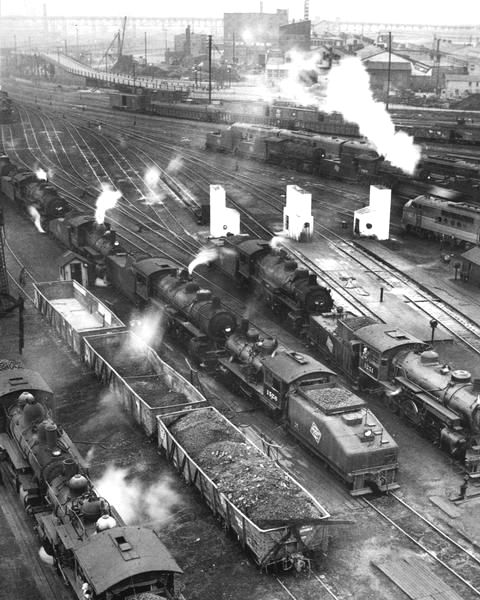
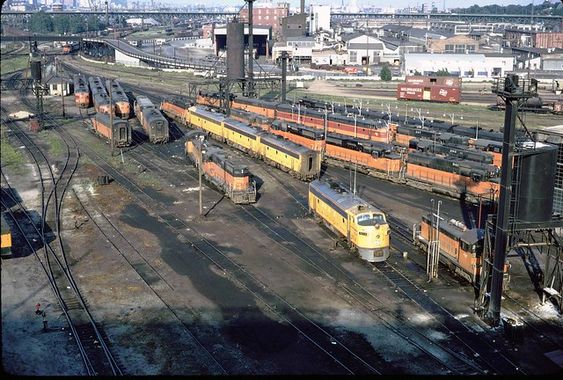
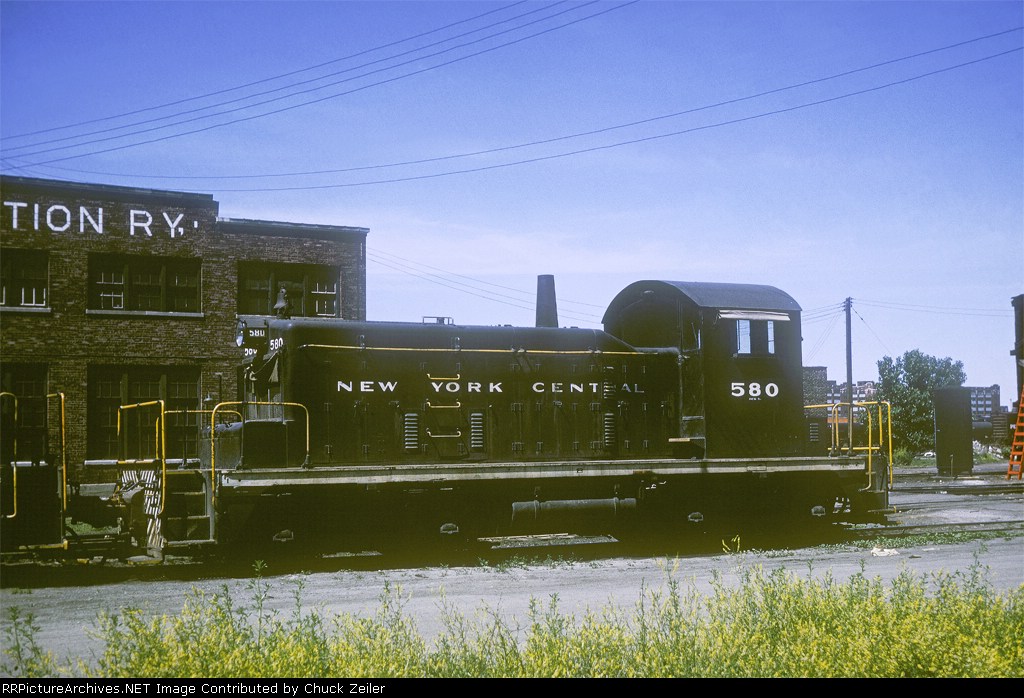
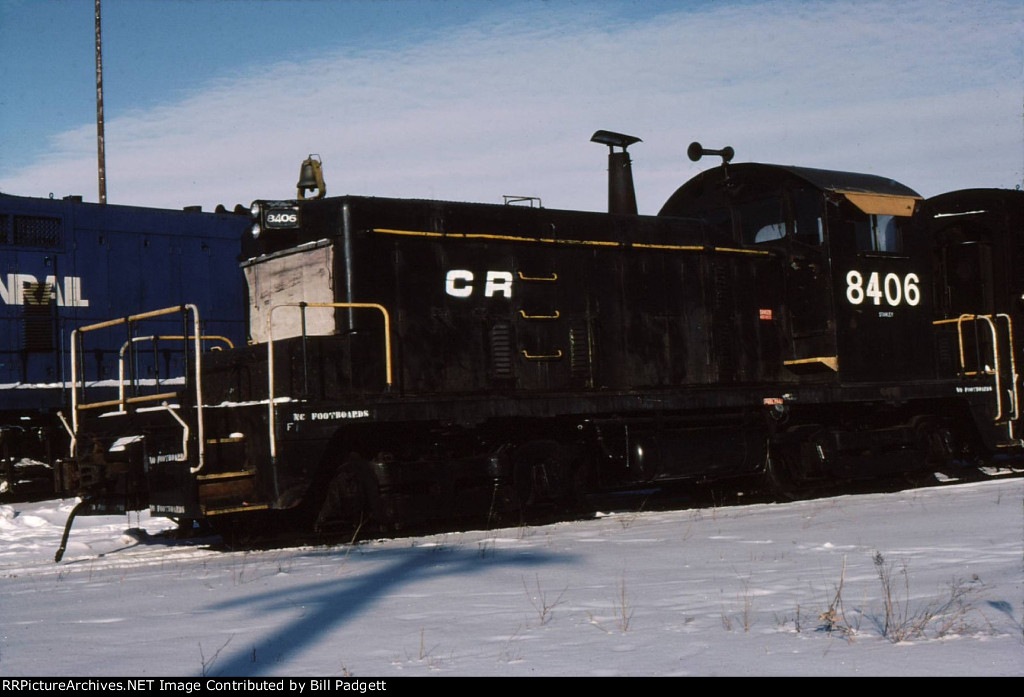
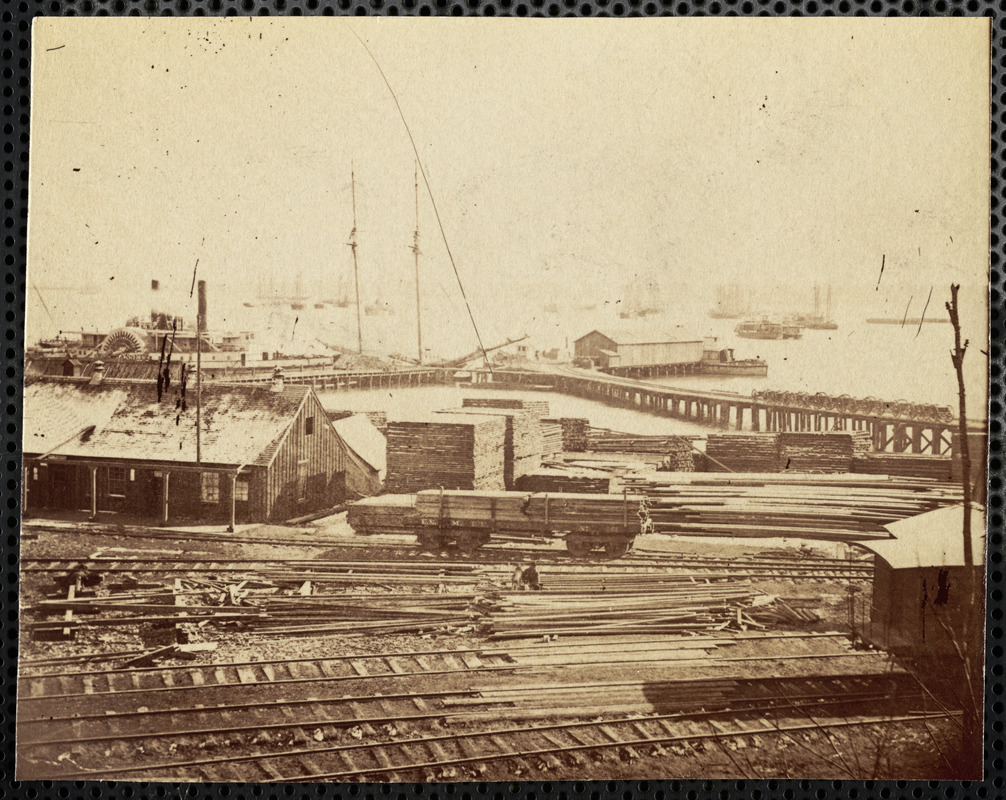
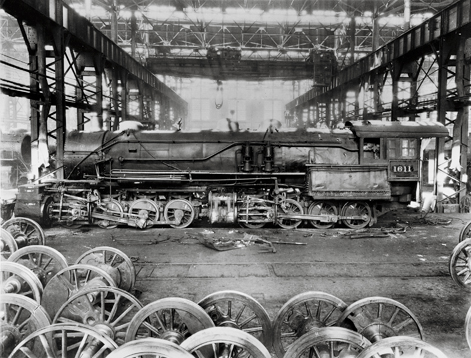
Comments